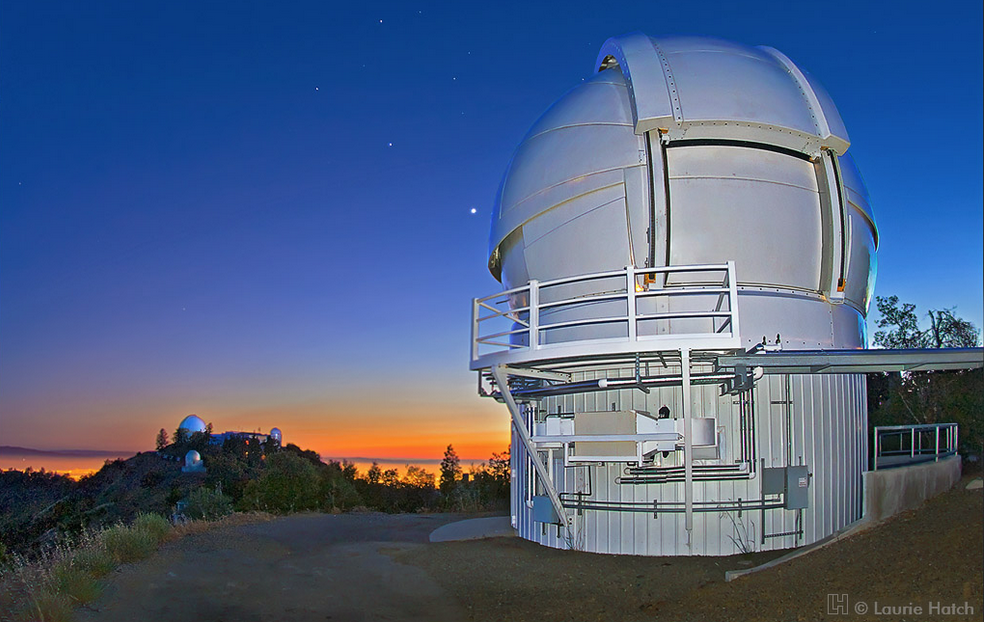Science
-
Current Research
-
Search for Extrasolar Planets
-
Adaptive Optics & Laser Guidestars
-
Evolution of Stars & Galaxies
-
Supernovae Survey to Cosmology
-
Brown Dwarfs & Low-Mass Stars
-
Distant Radio Galaxies
-
Massive Intergalactic Hydrogen Clouds
-
Optical Search for Extraterrestrial Intelligence
-
Education & Outreach
-
Active Telesopes
-
Historic Telesopes
-
Live HAMCAMS
-
Observer Information
Mailing List

- The Automated Planet Finder (APF) at Lick Observatory. Photo by Laurie Hatch.
Lick Observatory is a leader in the search for planets outside of our solar system.
Too tiny and distant to be seen directly, these planets are detected when their gravity affects the velocity of their parent star, causing the star to "wobble" in a regularly repeating pattern. Planet hunters have detected such wobbles as small as 1.0 m/second, equivalent to walking speed.
Lick astronomers monitor about 1,000 stars similar to the sun in luminosity, surface temperature, and evolutionary stage. Many Jupiter-size and Saturn-size planets have been discovered. As technology improves, smaller planets will be discovered more frequently. The ultimate goal of extrasolar planet search is to discover a solar system similar to our own with earth-like planets that may support life.
The fully-robotic Automated Planet Finder (APF) telescope searches robotically for extrasolar planets every night. The Shane telescope and the Hamilton spectrograph are also used to hunt for planets.
Discovering Habitable Exoplanets
In the video below, watch Steve Vogt, Professor of Astronomy and Astrophysics at UC Santa Cruz, discuss how we discover habitable exoplanets with the Automated Planet Finder at Lick Observatory
